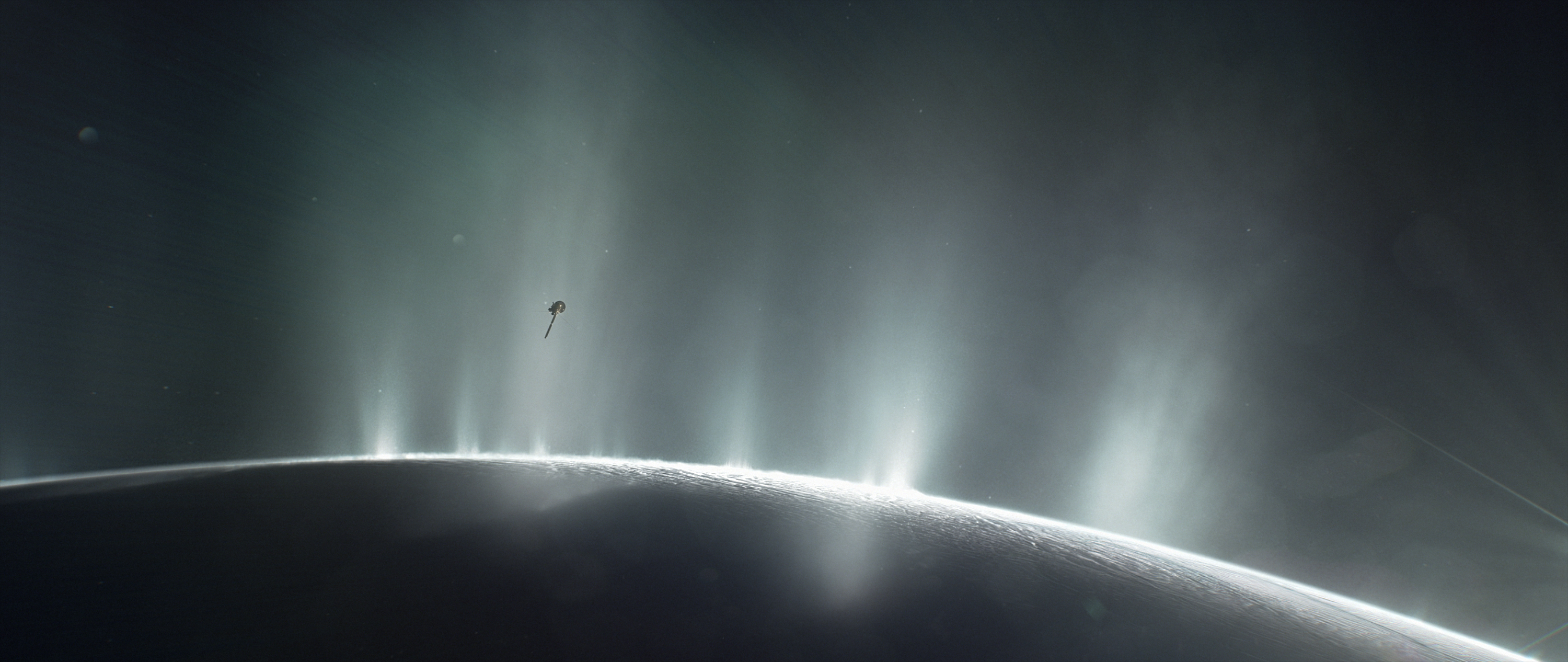Saturn's Icy Moon Enceladus Is Likely the 'Perfect Age' to Harbor Life

BELLEVUE, Wash. — Below the ice-covered surface of Saturn's moon Enceladus hides a vast ocean.
This sprawling ocean is likely 1 billion years old, which means it's the perfect age to harbor life, said Marc Neveu, a research scientist at NASA Goddard Space Flight Center last Monday (June 24) during a talk at the 2019 Astrobiology Science Conference. [Greetings, Earthlings! 8 Ways Aliens Could Contact Us]
Neveu and his colleagues used simulations to calculate Enceladus' age using data gathered by the Cassini spacecraft, which orbited Saturn for 13 years. The scientist and his team published their findings last April in the journal Nature Astronomy.
One of Cassini's major discoveries was that Enceladus had an ocean filled with hydrothermal vents. "It's very surprising to see an ocean today," Neveu told Live Science after the talk. "It's a very tiny moon and, in general, you expect tiny things to not be very active [but rather] like a dead block of rock and ice."
But not only does the tiny moon most likely have an ocean, this Washington-state-size icy moon has the habitat needed for life, including sources of chemical energy and sources of essential elements such as carbon, nitrogen, hydrogen and oxygen, Neveu said. "But there's [another] dimension of habitability...time," Neveu said.
If the ocean is too young – for example, only a couple of million years old – there probably wouldn't have been enough time to mix those ingredients together to create life, he said. What's more, that's not enough time for little sparks of life to spread enough for us Earthlings to detect them.
On the other hand, if the ocean is too old, it's as if the planet's "battery" is running out of juice; the chemical reactions needed to sustain life might stop, Neveu said.
Sign up for the Live Science daily newsletter now
Get the world’s most fascinating discoveries delivered straight to your inbox.
In this world, the elements that needed to dissolve would have dissolved, all the minerals needed to form would have formed, he said. The moon would've then reached an equilibrium, meaning that the reactions to sustain life wouldn't take place.
That means Enceladus' ocean may be the perfect age to harbor life.
Neveau and his team estimated the ocean's age with a little bit of guesswork. They ran about 50 simulations, plugging in various parameters based on measurements Cassini took, such as the details of Saturns' moons' orbits, the radioactivity of the rocks on Enceladus, and their own guesses as to the age of the moon and how it formed.
The simulation that best-replicated the icy moon's current conditions estimated that the ocean was 1 billion years old. However, Neveu cautions that this age estimation was based on a single simulation. And though it matches a lot of the conditions seen on Enceladus, it doesn't match all of them.
"For example, if you took the present day, the ocean would be refrozen in that simulation which is not what we're seeing." So the age of the ocean, should be taken with a grain of salt, Neveu said.
Neveu and his team are now working to make their simulation run faster. The hope is that, with the faster run time, and slightly improved models, they can more precisely date Enceladus' oceans. "We want to know this before we go back to search for life," he said.
- 13 Ways to Hunt Intelligent Aliens | Space
- In Photos: A Look at Titan's Bizarre Seas
- The Strangest Alien Planets (Gallery) | Space
Originally published on Live Science.

Yasemin is a staff writer at Live Science, covering health, neuroscience and biology. Her work has appeared in Scientific American, Science and the San Jose Mercury News. She has a bachelor's degree in biomedical engineering from the University of Connecticut and a graduate certificate in science communication from the University of California, Santa Cruz.










